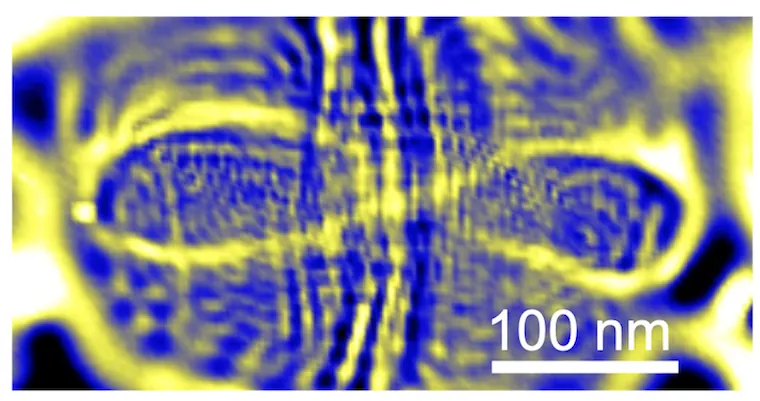
Alarming Rise in Walking Pneumonia Cases Among Ontario's Children – What Parents Need to Know!
2024-12-03
Author: Jacques
Overview of the Situation
Ontario is facing a staggering increase in cases of walking pneumonia, particularly among children, reaching a positivity rate that is over three times what it was before the COVID-19 pandemic. Public Health Ontario recently released data that reveals from January 1 to November 15 of this year, 733 out of 4,069 polymerase chain reaction (PCR) tests for mycoplasma pneumoniae were positive, amounting to an alarming 18% positivity rate. The surge began in May, but the real leap occurred between August and November, with positivity rates climbing to as high as 30%.
Symptoms and Risks
Though walking pneumonia—commonly characterized by milder symptoms such as a persistent cough, sore throat, headache, fatigue, and low-grade fever—usually does not require hospitalization, untreated cases can escalate into more severe pneumonia, placing children at risk.
Regional Trends
Canada's health care systems typically do not monitor walking pneumonia closely, yet reports indicate that provinces such as Quebec, Ontario, and British Columbia have been experiencing an unusual rise in this bacterial infection over the past few months.
US Trends
Interestingly, the United States has noted similar trends, with the Centers for Disease Control and Prevention (CDC) reporting elevated pneumonia cases, especially in children, since last spring.
Expert Insights
Julianne Kus, a clinical microbiologist at Public Health Ontario, stated that the uptick is expected compared to extremely low rates during the peak years of the COVID-19 pandemic, where positivity rates were recorded at just 1.3% in 2020. However, this year's figures mark a return to rates significantly higher than the pre-pandemic norm of 5.8% as seen in 2019.
Natural Resurgence
One compelling theory is that we may be witnessing a natural resurgence of walking pneumonia, which tends to manifest every three to seven years. Dr. Kus highlighted that enhanced data tracking on this illness helps health practitioners address and manage its spread effectively in communities.
Age Group Impacted
The most affected age group is children aged five to 17, who comprise roughly 45% of the positive test results. Younger children aged one to four also showed concerning positivity rates at 25.5%, while older populations over 18 years showed a markedly lower rate of 4.6%.
Antimicrobial Resistance
In a concerning twist, some patients have been found to exhibit antimicrobial resistance, with lab tests revealing 16.3% of the positive cases carrying mutations. This alarming statistic suggests that healthcare providers may need to consider alternative treatments rather than relying solely on standard antibiotics.
Surveillance Issues
Disturbingly, lack of surveillance is an issue, as hospitals in Quebec cannot provide specific data on walking pneumonia's prevalence. Earl Rubin, a leading infectious disease expert at the Montreal Children’s Hospital, reported a 'tremendous increase' in cases, an observation echoed by medical facilities across the country. Many hospitals have reported higher instances of children presenting with symptoms typically associated with walking pneumonia since August, although incidences remain untracked.
Other Provinces' Challenges
Alberta and Saskatchewan also face gaps in data collection, as walking pneumonia is not classified as a notifiable disease, complicating the tracking of its spread.
Advice for Parents
Parents are advised to stay vigilant for signs of walking pneumonia and should seek medical attention if symptoms arise. Given the highly contagious nature of this infection, the importance of hygiene, respiratory etiquette, and awareness of exposure settings cannot be overstated. As Canada navigates this worrying trend, increased awareness and prompt action may be essential in mitigating the potential impacts on public health.









 Brasil (PT)
Brasil (PT)
 Canada (EN)
Canada (EN)
 Chile (ES)
Chile (ES)
 España (ES)
España (ES)
 France (FR)
France (FR)
 Hong Kong (EN)
Hong Kong (EN)
 Italia (IT)
Italia (IT)
 日本 (JA)
日本 (JA)
 Magyarország (HU)
Magyarország (HU)
 Norge (NO)
Norge (NO)
 Polska (PL)
Polska (PL)
 Schweiz (DE)
Schweiz (DE)
 Singapore (EN)
Singapore (EN)
 Sverige (SV)
Sverige (SV)
 Suomi (FI)
Suomi (FI)
 Türkiye (TR)
Türkiye (TR)